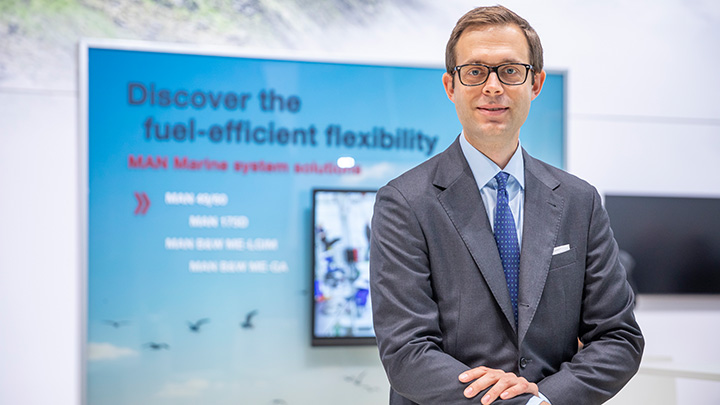By Wasana Nadeeshani Sellahewa
(Commonwealth) _ More environmentally friendly fuels are on the way, but a bigger global fleet will also cause shipping to exceed its carbon budget. Can it be put an end to? Discover investigates the incentives and laws required to achieve net-zero emissions by 2050.
Kryger, a principal strategist at MAN Energy Solutions, has spent the previous few months researching the trajectory of the marine industry until the year 2050. The findings deliver a crystal-clear message: The International Maritime Organization (IMO) has to implement more stringent laws yesterday rather than today if it wants to fulfill the Paris Agreement target of carbon neutrality by 2050.
Kryger’s work demonstrates that there will be a dual development while we wait for international rules to be approved. On the one hand, the percentage of e-Fuels like ammonia, methanol, and methane in shipping will slowly increase starting in 2030, which will cut CO2 emissions, driven by customer demand and anticipated regulatory reforms. The availability of technology is closely related to this since MAN Energy Solutions and other engine manufacturers currently provide methanol-based engines. The first ammonia-fired engines will be ready in 2024, and by 2050, methanol and ammonia will be the most commonly utilized fuels.
On the other side, the fleet will increase by 60% over the next three decades, from today’s 3 billion deadweight tonnes to nearly 5 billion in 2050, propelled by global commerce and economic expansion. And even though well-to-wake emissions would begin to decline by the end of this decade if regulations were to be put in place, the fleet’s overall expansion would still contribute to the tremendous overshoot that Kryger is illustrating. The major objective of the Paris Agreement, which is to keep global warming to 1.5 degrees, won’t be accomplished, according to Kryger.
Setting challenging intermediate objectives on the way to net zero by the middle of the century, the IMO should be the source of these laws. Carbon pricing or mandated company quotas are examples of tangible actions. We must establish a shared drive, adds Kryger, no matter how we go about it. The difficulty is expanding the worldwide fleet while reducing its carbon footprint.
Although Newbuilding is headed in the right direction, further incentives are needed to encourage it to get more dual-fuel engines, which will serve as the foundation for future synthetic-fuelled marine vessels. A definite step in the right direction, almost 50% of MAN Energy Solutions’ new orders in the two-stroke industry this year have been for dual-fuel engines. The decarbonization of the current fleet, however, is a major task that needs particular consideration from legislators. According to MAN, 2,300 oceangoing ships might benefit from switching to dual-fuel propulsion, which could reduce annual CO2 emissions by as much as 86 million tons when powered by carbon-neutral fuels.
Since the shipping industry now accounts for around 2.5% of global emissions, there is growing demand from the public for them to do their part to combat global warming. The sector can only anticipate the public pressure to continue increasing as the effects of climate change become more and more apparent to people throughout the world through catastrophic weather occurrences.
In order to lessen the whole CO2 footprint of their products, including transportation, more and more businesses are also asking ship-owners about their emissions. Wayne Jones, Chief Sales Officer and member of the Executive Board of MAN Energy Solutions, explains that this is the reason for the sharp increase in requests from the maritime sector for engines using alternative fuels.
The German Shipbuilding and Ocean Industries Association (VSM) and VDMA recently published a Power-to-X roadmap outlining how shipping in Europe could stop emitting CO2 as early as 2045. This is much sooner than what regulatory bodies are currently discussing, but it may still not be quick enough if the current overshoot is not reduced by 2030.








